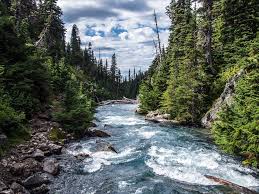 Although several hundred years ago, the Earth was largely unmapped, one would think that in our current day and age, with our powerful technology and swarms of satellites (over 1,300), that our planet would be completely mapped out and there would be little left to discovery. That is simply not the case, as scientists at The University of North Carolina at Chapel Hill and Texas A&M University recently discovered that Earth has 44 percent more rivers and streams than we previously knew.
Although several hundred years ago, the Earth was largely unmapped, one would think that in our current day and age, with our powerful technology and swarms of satellites (over 1,300), that our planet would be completely mapped out and there would be little left to discovery. That is simply not the case, as scientists at The University of North Carolina at Chapel Hill and Texas A&M University recently discovered that Earth has 44 percent more rivers and streams than we previously knew.
While it would seem that discovering so many more rivers and streams is a good thing, that is actually not the case. More rivers and streams can actually mean that climate change is moving at an even more rapid pace.
The project began as an attempt to figure out how much moving water is on Earth, as moving water releases carbon dioxide into the atmosphere and it is important that we know exactly how much is being released. Carbon dioxide makes climate change worse and it is essential that scientists are able to track it.
When studying climate change, scientists tend to look at how much carbon dioxide we release by burning fossil fuels, but carbon dioxide enters the atmosphere in other ways as well. Many of Earth’s rivers and streams are full of pollution from fertilizers and waste produced by humans and animals, all of which release carbon dioxide. In fact, the amount of carbon dioxide released from rivers and streams is equal to one-fifth of what is produced by burning fossil fuels and producing cement.
The group of researchers made the discovery by using NASA’s Landsat satellite. The scientists looked through data from this satellite to find rivers that are over 30 meters in width. They culled over 58 million measurements and created a database named Global River Widths from Landsat (GRWL).
The scientists then used this data to calculate the amount of Earth’s surface area with streams and rivers, which produced an area about the size of Italy and over 44 percent more than we had originally thought.
To make matters worse, much of this moving water is found in Antarctica, which is already feeling the effects of climate change in a more pronounced way than other places. Sadly, we now have to account for more carbon dioxide and must find even more ways to reduce the amount that is being released into our atmosphere if we want to slow down climate change.








